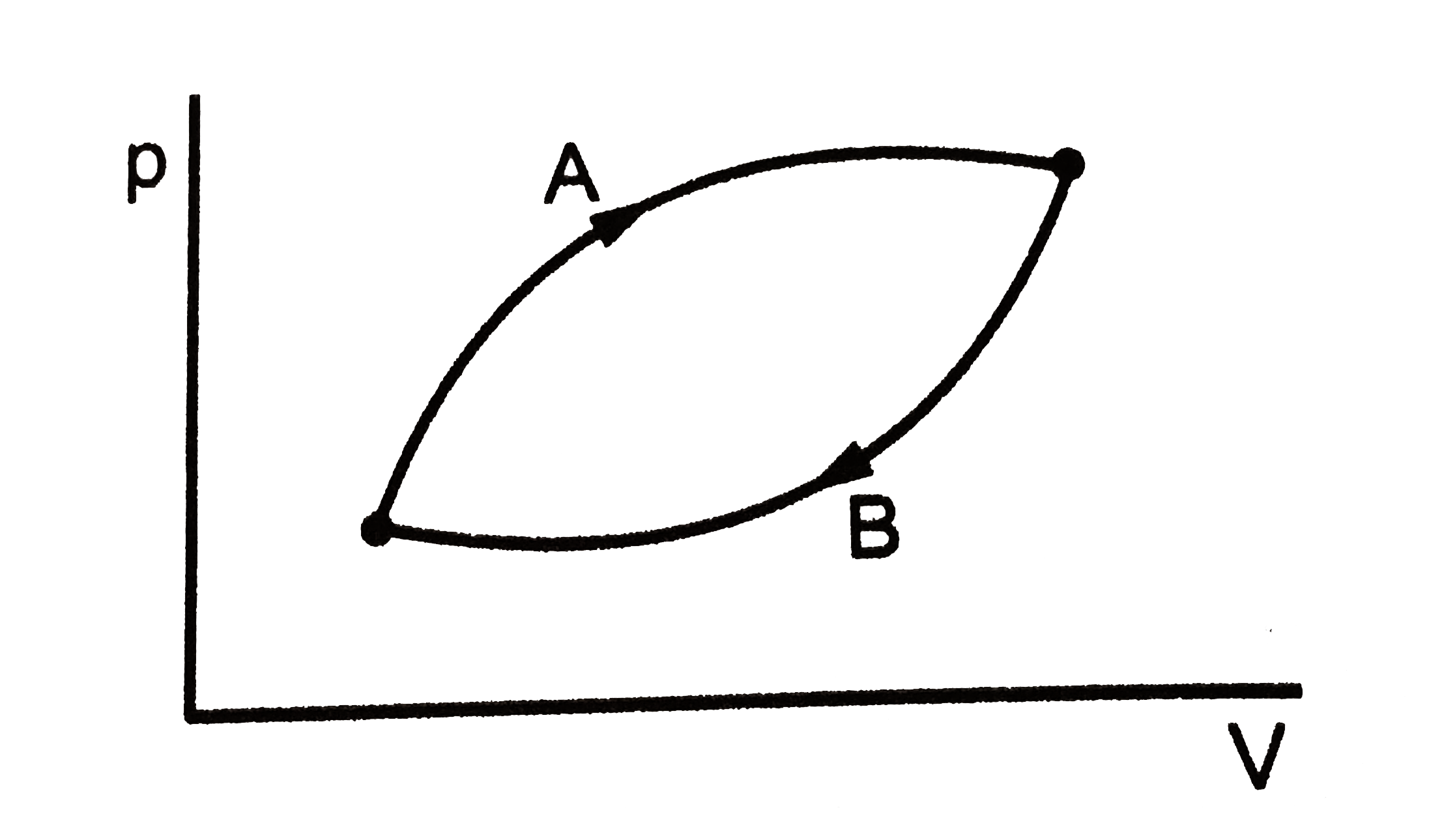In a process on a system, the initial pressure and volume are equal to the final pressure and volume
(i) The initial temperature must be equal to the final temperature
(ii) The initial internal energy must be equal to the final internal energy
(iii) The net heat given to the system in the process must be zero.
(iv) The net work done by the sytem in the process must be zero.
(i),(ii)
(ii),(iii)
(iii),(iv)
(i),(iv)
The correct Answer is:A
Number of moles n=PVRT=constant (for given mass of gas)
P1V1=P2V2 i.e., T1=T2
U1=U2
U1=U2 In cyclic process, initial and final thermodynamic variables are same ΔU=0
ΔQ=ΔQ≠0
Topper's Solved these Questions
Similar Questions
Knowledge Check
For an ideal gas of fixed amount, the initial pressure and volume are equal to the final pressure and volume
AThe initial temperature must be equal to the final temperatureBThe initial internal energy must be equal to the final internal energy .CThe het heat given to an ideal gas in the process must be zeroDThe net work done by an ideal gas in the process may be zeroRefer to let ΔU1 and ΔU2 be the changes in internal energy in the system in process A+B and ΔW be the net work done by the system in the process A+B,
 AΔU1+ΔU2=0.BΔU1−ΔU2=0CΔQ−ΔW=0.DΔQ+ΔW=0.
AΔU1+ΔU2=0.BΔU1−ΔU2=0CΔQ−ΔW=0.DΔQ+ΔW=0.What is the change in internal energy if 10 J of heat is given to system at constant pressure and 20 J of work is done by the system?
A10 JB30 JC−10JD−30J
When 20J of work was done on a gas,30J of heat energy was released.If the initial internal energy of the gas was 70J ,what is the final internal energy?
View SolutionWhen 20J of work was done on a gas,30J of heat energy was released.If the initial internal energy of the gas was 70J,what is the final internal energy?
View SolutionA given amoount of gas is heated until both its pressure and volume are doubled. If initial temperature is 270C, its final temperature is
View SolutionFor a thermodynamic process δQ=–50 calorie and W = – 20 calorie. If the initial internal energy is – 30 calorie then final internal energy will be -
View SolutionTwo gases have the same initial pressure, volume and temperature. They expand to the same final volume, one adiabatically and the other isothermally
View Solution

